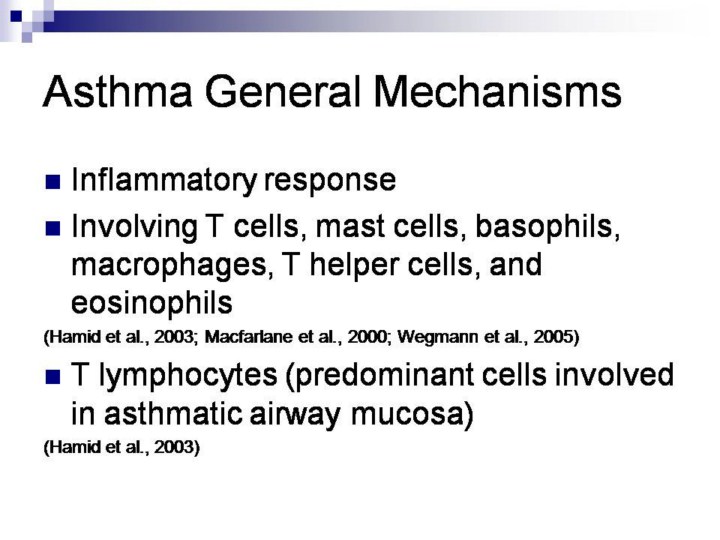| front |1 |2 |3 |4 |5 |6 |7 |8 |9 |10 |11 |12 |13 |14 |review |
 |
*Just for everyone’s review, remember that basophils & eosinophils are granulocytes (more than 1 nucleus) usually involved in the inflammatory response. Granulocytes release contents such as proteases and they are also capable of expression of adhesion molecules on their cell surface when they are activated. Eosinophils are increased in allergic reactions (keeping in mind that asthma has been associated with allergies). Basophils can bind with antigens and release histamine. Macrophages start as monoctyes which are agranulocytes (have 1 nucleus) and they too play a role in chronic inflammation. In addition, T cells are lymphocytes- one of the types of WBC’s or Leukocytes. T-helper cells secrete cytokines (or proteins) that help with the many functions of the immune system. *T-lymphocytes are believed to be the predominant cells involved in the asthmatic airway mucosa, where upon stimulation (such as an acute asthma attack triggered by an allergen), they manufacture large amounts of cytokines. These cytokines are further broken down, I will discuss this on the next slide. |